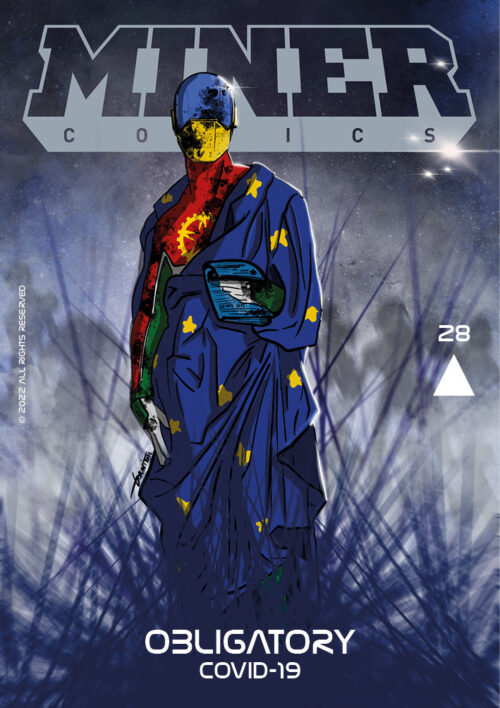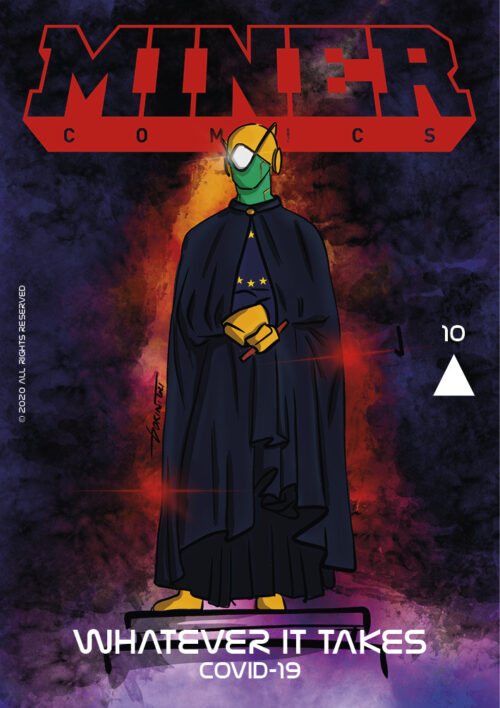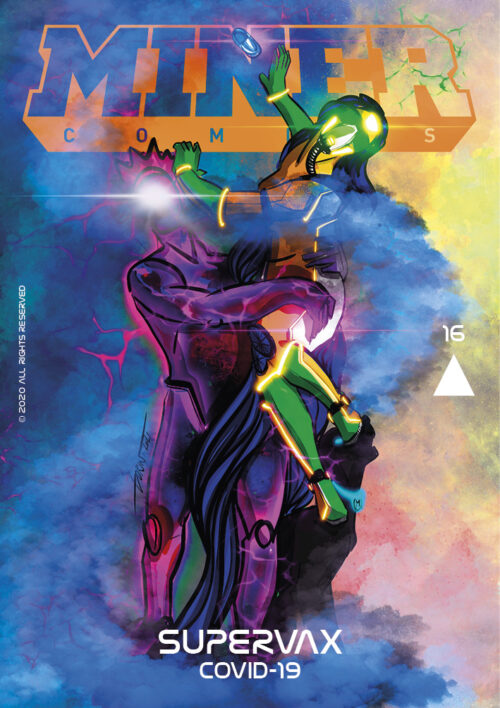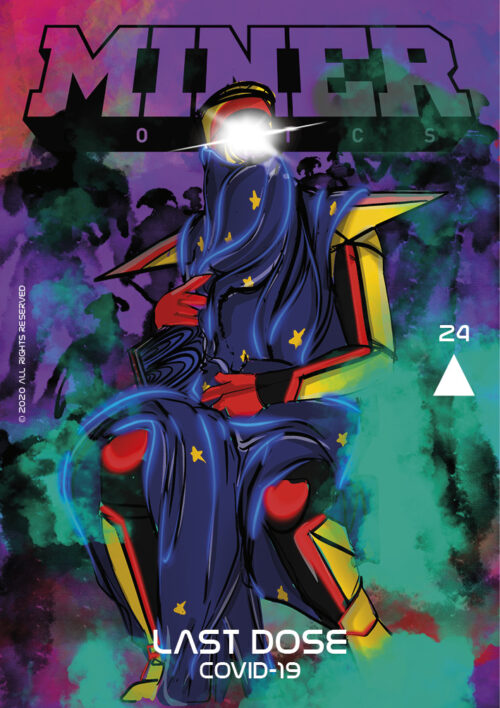-
 There is a new variant of the coronavirus to keep under control - indeed, a variant of the variant: it is the AY.4.2., Also called Delta plus because it is a mutation of the Delta (the "Indian variant", for those who have been attacked to the old denomination). In England, Delta plus is the cause of about 10% of covid infections, but for now it is difficult to understand what its evolution will be: here is what we know and what lessons we can draw from this umpteenth change of course of the SARS-CoV-2 coronavirus .
There is a new variant of the coronavirus to keep under control - indeed, a variant of the variant: it is the AY.4.2., Also called Delta plus because it is a mutation of the Delta (the "Indian variant", for those who have been attacked to the old denomination). In England, Delta plus is the cause of about 10% of covid infections, but for now it is difficult to understand what its evolution will be: here is what we know and what lessons we can draw from this umpteenth change of course of the SARS-CoV-2 coronavirus . -
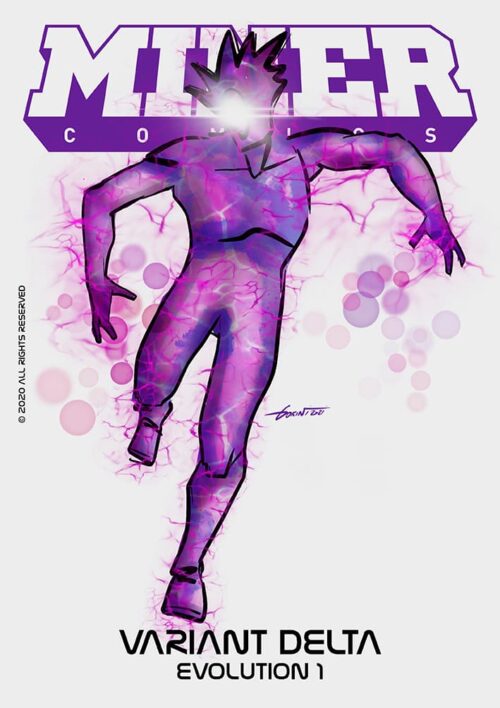 Burne Hogart (Chicago, 25 dicembre 1911 – Angoulême, 28 gennaio 1996) è stato un fumettista statunitense. Sebbene la sua principale attività sia stata il disegnatore di fumetti, egli ha spaziato in tutta la gamma dei campi artistici: infatti è stato anche illustratore, incisore, insegnante, pittore, scrittore e teorico dell'arte. È autore di numerosi libri di anatomia artistica. https://it.wikipedia.org/wiki/Burne_Hogarth
Burne Hogart (Chicago, 25 dicembre 1911 – Angoulême, 28 gennaio 1996) è stato un fumettista statunitense. Sebbene la sua principale attività sia stata il disegnatore di fumetti, egli ha spaziato in tutta la gamma dei campi artistici: infatti è stato anche illustratore, incisore, insegnante, pittore, scrittore e teorico dell'arte. È autore di numerosi libri di anatomia artistica. https://it.wikipedia.org/wiki/Burne_Hogarth -
 La VOC-202012/01 (SARS-CoV-2 Variant of Concern 202012/01), chiamata anche Variant Under Investigation in December 2020,[1] B.1.1.7[2][3] e 20I/501Y.V1[4] o più comunemente come "variante inglese/alfa", corrisponde a una variante mutata di SARS-CoV-2, il virus che causa COVID-19. La variante è stata rilevata per la prima volta in Regno Unito ed è stata segnalata dal dipartimento sanitario di quel paese nel novembre 2020. Una delle prime varianti ad essere stata scoperta, è stimata essere del 30%-80%[5] più trasmissibile della SARS-CoV-2 normale ed è stata scoperta per la prima volta nel novembre 2020 da un campione prelevato a settembre nel Regno Unito; ha iniziato a diffondersi rapidamente a metà dicembre ed è legato a un aumento significativo delle infezioni da SARS-CoV-2 nel paese. Si ritiene che questo aumento della contagiosità sia almeno in parte dovuto a una o più mutazioni nella proteina spike del virus.[6]
La VOC-202012/01 (SARS-CoV-2 Variant of Concern 202012/01), chiamata anche Variant Under Investigation in December 2020,[1] B.1.1.7[2][3] e 20I/501Y.V1[4] o più comunemente come "variante inglese/alfa", corrisponde a una variante mutata di SARS-CoV-2, il virus che causa COVID-19. La variante è stata rilevata per la prima volta in Regno Unito ed è stata segnalata dal dipartimento sanitario di quel paese nel novembre 2020. Una delle prime varianti ad essere stata scoperta, è stimata essere del 30%-80%[5] più trasmissibile della SARS-CoV-2 normale ed è stata scoperta per la prima volta nel novembre 2020 da un campione prelevato a settembre nel Regno Unito; ha iniziato a diffondersi rapidamente a metà dicembre ed è legato a un aumento significativo delle infezioni da SARS-CoV-2 nel paese. Si ritiene che questo aumento della contagiosità sia almeno in parte dovuto a una o più mutazioni nella proteina spike del virus.[6] -
 La variante Omicron del SARS-CoV-2, chiamata lignaggio B.1.1.529, è la variante del coronavirus SARS-CoV-2 con la più alta prevalenza cumulativa globale nell'anno 2022.[1][4][5] Secondo la nomenclatura PANGO, comprende la riga B.1.1.529 (in Nextstrain 21M) con la principale sottovariante BA.1 (Nextstrain 21K) e altre sottovarianti.[2][4] La variante Omicron è stata rilevata per la prima volta in Botswana in un campione raccolto il 9 novembre 2021. Uno dei primi a identificare la variante fu il virologo zimbabwese Sikhulile Moyo,[6] direttore del laboratorio, il 26 novembre 2021. L'Organizzazione Mondiale della Sanità l'ha classificata come VOC (Variant Of Concern: variante preoccupante) e nominata con la lettera greca omicron.[5] L'OMS, nel sequenziare la nomenclatura delle varianti, ha saltato le precedenti lettere ni e xi dell'alfabeto greco per evitare confusione con le somiglianze della parola inglese new (nuovo) e il cognome cinese Xi.[7] Questa variante ha un numero insolitamente alto di mutazioni, molte delle quali sono nuove o colpiscono il peplomero, conosciuto come proteina spike. Queste caratteristiche rendono la variante Omicron preoccupante per quanto riguarda la sua trasmissibilità e l'efficacia del sistema immunitario o dei vaccini contro di essa. Sono state messe in atto a livello internazionale diverse restrizioni all'ingresso per i viaggiatori provenienti dai paesi in cui è stata rilevata, al fine di limitarne la diffusione. Nonostante ciò, la variante era presente in tutto il mondo a metà dicembre, diffondendosi a un ritmo senza precedenti secondo l'OMS e ECDC.[8][9]
La variante Omicron del SARS-CoV-2, chiamata lignaggio B.1.1.529, è la variante del coronavirus SARS-CoV-2 con la più alta prevalenza cumulativa globale nell'anno 2022.[1][4][5] Secondo la nomenclatura PANGO, comprende la riga B.1.1.529 (in Nextstrain 21M) con la principale sottovariante BA.1 (Nextstrain 21K) e altre sottovarianti.[2][4] La variante Omicron è stata rilevata per la prima volta in Botswana in un campione raccolto il 9 novembre 2021. Uno dei primi a identificare la variante fu il virologo zimbabwese Sikhulile Moyo,[6] direttore del laboratorio, il 26 novembre 2021. L'Organizzazione Mondiale della Sanità l'ha classificata come VOC (Variant Of Concern: variante preoccupante) e nominata con la lettera greca omicron.[5] L'OMS, nel sequenziare la nomenclatura delle varianti, ha saltato le precedenti lettere ni e xi dell'alfabeto greco per evitare confusione con le somiglianze della parola inglese new (nuovo) e il cognome cinese Xi.[7] Questa variante ha un numero insolitamente alto di mutazioni, molte delle quali sono nuove o colpiscono il peplomero, conosciuto come proteina spike. Queste caratteristiche rendono la variante Omicron preoccupante per quanto riguarda la sua trasmissibilità e l'efficacia del sistema immunitario o dei vaccini contro di essa. Sono state messe in atto a livello internazionale diverse restrizioni all'ingresso per i viaggiatori provenienti dai paesi in cui è stata rilevata, al fine di limitarne la diffusione. Nonostante ciò, la variante era presente in tutto il mondo a metà dicembre, diffondendosi a un ritmo senza precedenti secondo l'OMS e ECDC.[8][9]




